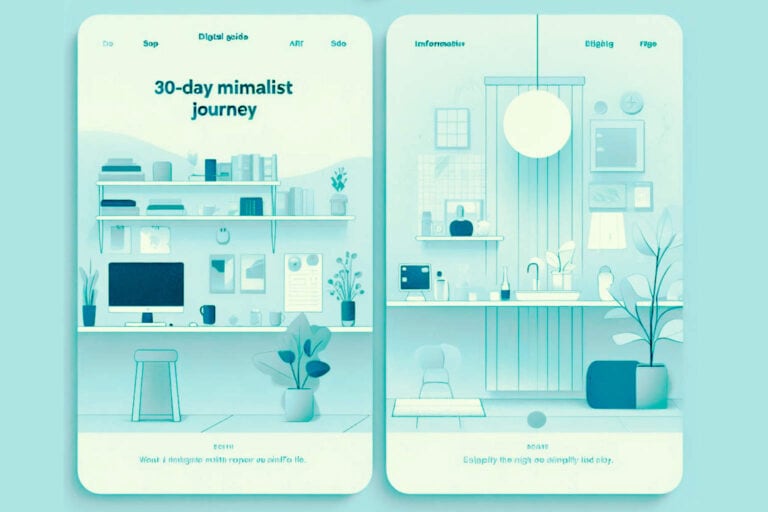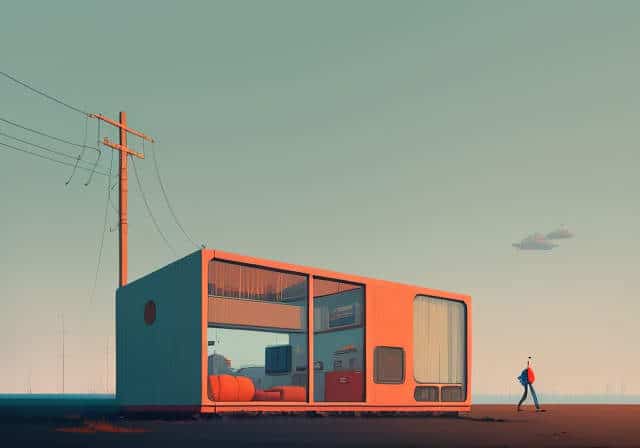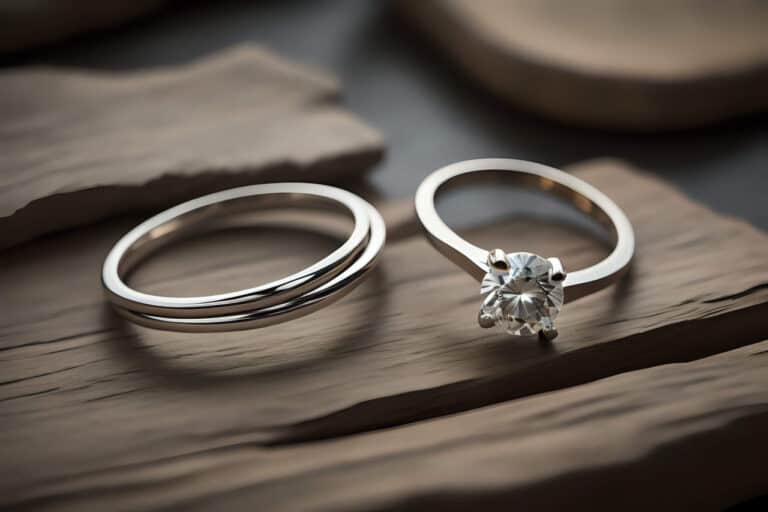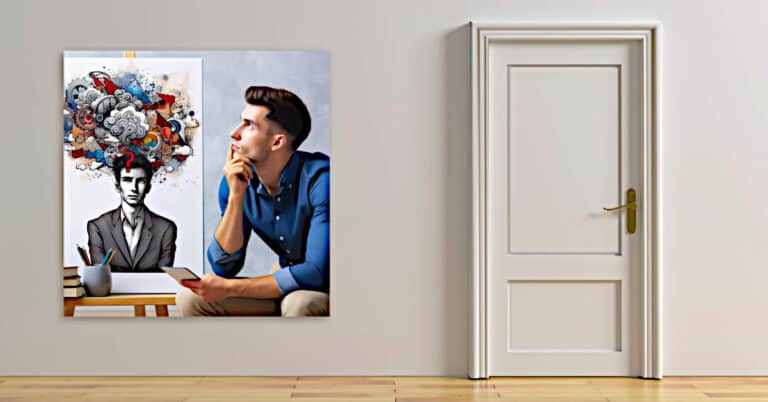The Art of Creative Decluttering – 11 Steps To Get Rid Of The Old You
Discover the best pro tips for decluttering and organizing every room in your home.
Learn how to efficiently declutter and tidy up your kitchen, bedroom, office, garage, closets, and more using helpful strategies like shelving, storage bins, sorting, and purging unused items.

1. How to Declutter Your Home Room by Room
Getting organized and decluttered can seem like an overwhelming task, but it doesn’t have to be if you take it one room at a time. Here are some of the best tips for decluttering your home room by room:
- Start with a plan. Make a list of all the rooms and areas you want to declutter and put them in order of priority. Tackle the worst spaces first.
- Set a timer. Give yourself a set amount of time to work on each room, like 30 minutes. This will help you stay focused.
- Have boxes and bags ready. Have empty boxes, trash bags, recycling bags, and donate bags available to quickly sort items as you go. This makes it fast to see progress.
- Work top to bottom. Start decluttering at the top of a space, like cabinets and shelves, before moving down to larger furniture.
- Group like items. Put similar items together, like kitchen gadgets or toiletries, to see how much you actually have. Getting rid of duplicates can really cut clutter.
- Be ruthless. If you haven’t used it in over a year, it’s unlikely you need it. Don’t be afraid to discard unneeded items.
- Take breaks. Decluttering is both physically and mentally draining. Take short breaks every hour to recharge.
- Maintain as you go. Decluttering is never really “done” – stay on top of spaces after organizing by doing quick daily maintenance.
2. Best Decluttering Tips for Paper Clutter
Paper clutter like mail, receipts, and documents can quickly pile up and take over your home. Use these pro tips to declutter all the paper in your life:
- Sort it first. Separate papers into broad categories like bills, receipts, manuals, medical, legal documents, and sentimental papers.
- Shred sensitive info. Use a shredder to dispose of any documents containing personal information you no longer need. This prevents identity theft.
- Scan documents. Use a scanner app to make digital copies of important documents to keep. Then recycle the originals.
- Only save tax records for 7 years. Unless related to real estate or investments, tax records older than 7 years are safe to shred.
- Unsubscribe from junk mail. Cut down on incoming junk by calling companies to remove your name from mailing lists.
- Use trays and folders. Contain papers in assigned trays or folders so they don’t spread out. Label them clearly.
- Adopt paperless billing. Request electronic billing and payments when possible to reduce incoming statements.
- Schedule time weekly. Set aside 30 minutes each week to sort through mail and papers to prevent buildup.
3. How to Declutter Your Closets
Overstuffed, disorganized closets are a common problem. Here are some of the top tips for streamlining your closets:
- Empty it out completely. Take everything out so you can see what you actually have. Make four piles – keep, donate, tailor, trash.
- Store out-of-season clothes elsewhere. Put off-season clothes in garment bags under beds or in storage bins to free up closet rod space.
- Hang frequently worn items at eye level. Place garments you wear most in the easiest-to-reach spots for convenience.
- Use space-saving hangers. Slim velvet hangers allow you to fit way more clothes neatly on the rod. Sturdy wood hangers keep shirts wrinkle-free.
- Add shelves for folded items. Install shelves above the rod for folded sweaters, jeans, t-shirts and shorts. Use dividers or bins to stay organized.
- Get rid of wire hangers. These tangle easily, cause clothes to slip off, and take up more space. Replace with higher quality hangers.
- Maximize vertical space. Add a second rod for additional hanging room. Shelves let you stack folded items upward.
- Donate unused clothing and shoes. If it hasn’t been worn in over a year, donate it so someone else can use it. This also reduces clutter.
4. Tips for Decluttering the Kitchen
As the room where meals are prepped and eaten, kitchens easily become disorganized. Make this space functional again using these handy kitchen decluttering strategies:
- Clear countertops completely. Remove everything from counters and clean. Only put back essentials, storing the rest elsewhere.
- Purge pantry items. Check expiration dates and get rid of any expired, stale, or unneeded food items cluttering up the pantry.
- Organize with containers. Use matching clear containers to sort and contain food items like flour, sugar, pasta, rice, etc. Label containers.
- Declutter drawers. Go through all flatware, gadget, liner, and other drawers to remove unnecessary utensils and funky containers. Toss or donate.
- Clean out cabinets. Remove everything from cabinets, wipe them down, then only return dishes you use regularly. Donate extras.
- Install a knife block. Unclutter your drawers by storing knives in a dedicated countertop knife block. Easy access makes cooking simpler.
- Maximize vertical space. Use racks inside cabinet doors or shelves on walls to store spices, oils, utensils, etc. Get them off the counter.
- Group like items. Keep all baking pans together, all drinking glasses together, all canned goods together, etc. for easy access.
5. How to Declutter Your Bedroom
Bedrooms easily become cluttered catch-alls. Apply these bedroom organization tips to feel peaceful and declutter your sleeping space:
- Make your bed daily. Having an orderly, made bed establishes a restful tone for the whole room.
- Clear surfaces. Remove everything from your nightstand, dresser, and other surfaces. Only put back what you need daily.
- Use trays for small items. Contain watches, earrings, change and other small objects in trays or dishes so they don’t spread out.
- Hang or fold clothes immediately. Never toss clothing on chairs or furniture. Put it away right after wearing or laundering.
- Invest in storage furniture. Beds, dressers and nightstands with built-in drawer organizers keep small items tidy.
- Install shelves. Wall mounted shelves give a place to display framed photos and other decorative touches while keeping them dust-free.
- Add closet organization. Use velvet hangers, shelves, and bins to neatly organize your closet. Only display loved items.
- Remove excess furniture. Too many chairs, accent tables, etc. creates a cluttered look. Stick to only essential furnishings.
6. Garage Organization Tips
Decluttering and organizing your garage has major benefits, like freeing up space and finding what you need quickly. Follow these tips for a tidy, functional garage:
- Thoroughly clean the space. Sweep floors, wipe down shelves, and remove cobwebs. A clean slate helps immensely when organizing.
- Purge the junk. Be ruthless about getting rid of things you don’t need or use like old paint cans, broken equipment, piles of scrap wood, etc.
- Add shelving. Sturdy wall shelves double your usable storage space. Use bins and baskets to corral like items on shelves.
- Label storage containers. Clearly labeling bins makes finding frequently used tools, auto accessories, sports equipment and other items a breeze.
- Use wall space. Hang tools, ladders, hoses, bicycles and other items vertically on slatwall panels, pegboard or large hooks to get them off the floor.
- Consider a cabinet. Enclosed metal cabinets neatly store dangerous chemicals, flammables, cleaners and other hazardous items securely away from children.
- Park strategically. Pull vehicles in just far enough to fully close the garage door. This leaves maximum room for storage along walls.
- Add task lighting. Installing overhead lighting, under cabinet lighting or other task lighting makes the space functional.
7. Decluttering Small Spaces
Living in a small home doesn’t mean you have to feel crowded by clutter. Use these savvy small space decluttering tips to create breathing room:
- Purge ruthlessly. Be absolutely merciless about getting rid of anything you don’t use often or need. Clutter is magnified in tight quarters.
- Limit furniture to necessities. Stick to a few versatile, small-scale multipurpose furnishings instead of lots of single-use pieces.
- Take advantage of vertical space. Install shelves high on walls, double hang rods in closets, and stack washer/dryer units. Get things up off floors.
- Use furniture for concealed storage. Ottomans, coffee tables, beds, couches and cabinets with built-in storage hide possessions neatly.
- Organize using baskets. Woven baskets instantly tidy up shelves while adding texture. Use different sized baskets for different items.
- Choose multifunctional furniture. Tables that fold down into smaller pieces, sofas incorporating storage, and beds with drawers maximize utility.
- Edit regularly. Make a habit of quickly sorting through items each season and getting rid of anything you’re not actively using to keep clutter from accumulating.
- Display only your favorites. Keep only framed artwork, photos, accessories and tchotchkes you truly love on shelves or tables to avoid clutter.
8. Decluttering Tips for Kids’ Rooms
Kids’ rooms tend to get messy and disorganized quickly. Make decluttering and keeping their space neat easier with these helpful strategies:
- Purge toys. Have kids sort toys into “keep” and “donate” piles. Rotate toys in storage bins so everything isn’t out at once.
- Use shelves for display. Shelves let kids display favorite toys, books and collectibles neatly so they can admire them without creating mess.
- Label bins clearly. Use words and pictures to label colorful plastic bins for different types of toys, books, art supplies, etc. Makes clean up faster.
- Have a donation bin. Keep a designated box or bin for items to donate in an accessible spot so it’s easy for kids to sort items to discard.
- Display art smartly. Affix removable adhesive hooks to the wall to display changing artwork and school projects to avoid clutter.
- Get toy storage. Soft storage cubes or canvas bins fit stuffed animals, blocks, trains, dolls, and other toys while adding bright color.
- Set daily tidy expectations. Assign a quick, age-appropriate tidy task like making the bed or returning stray toys to bins before bedtime.
- Limit mess-makers. Avoid toys with tons of loose pieces that can easily get strewn around room. LEGO tables contain the bricks.
9. Offices and Home Office Decluttering Tips
An organized office minimizes distractions and boosts productivity. Try these tips for decluttering home or work offices:
- Purge paper. Shred old documents and file away current papers. Scan documents to digitize them. Unsubscribe from catalogs and junk mail.
- Clear desktop. Keep desk surface neat with just a monitor, keyboard, phone, and notebook and pen or pencil cup. Store everything else.
- Use drawer organizers. Use dividers and trays to neatly sort office supplies, chargers, flash drives and other desk drawer contents.
- Display only useful items. Limit decor to functional calendar, pen holder, framed photos and a plant. Too many knickknacks are distracting.
- Add shelves. Wall mount rails or shelves over your desk to store books, supplies, awards, and art. Get them off your desk.
- Label everything. Use a label maker to mark filing cabinets, binders, folders, storage boxes and digital files so you can find what you need fast.
- Sit down and sort through files. Clean out one filing cabinet drawer at a time. Toss out old, useless paperwork and file remaining documents neatly.
- Scan then recycle bulky documents. Important papers like contracts take up a lot of room. Scan them, then shred to free up filing space.
10. Bathroom Decluttering Tips
Even small bathrooms easily get overloaded with beauty products, medications, towels, and cleaning supplies. Get organized with these tips:
- Audit toiletries. Toss out expired medications, dried up products, old razors, empty bottles, and discontinued beauty items.
- Add shelving. Install wall mounted shelving or over the toilet shelves to increase storage space for extra towels and toiletries.
- Consider a rolling caddy. A plastic caddy with handle neatly stores cleaning sprays, sponges, wipes and cleaning products while keeping them portable.
- Hang towels near shower. Install hooks, rods, or wall-mounted towel racks right by the shower to make grabbing a towel easier. Reduce stepping out onto a wet floor.
- Use baskets under sinks. Woven baskets under bathroom sinks neatly corral hair products, first aid items, toilet paper rolls and other necessities.
- Containerize loose items. Use an organizer tray, turntable, or drawer dividers to neatly sort and contain makeup brushes, cotton balls, Q-tips, hair ties and other small items.
- Only keep a few towels out. Limit towels in cupboard to only a few neatly folded ones. Store extra towels in closets or cabinets.
- Add a magazine holder. Wall-mounted magazine files or freestanding holders by the toilet neatly store reading material.
11. Key Takeaways: Declutter Your Home Room-by-Room
- Set aside time to declutter one room or area at a time.
- Work top to bottom in each space, discarding as you go.
- Group like items together and remove duplicates.
- Use storage furniture, shelves, bins and labels to stay organized.
- Schedule weekly maintenance sessions to stay on top of clutter.
- Purge ruthlessly – if you don’t need it, don’t keep it!
In Summary – Get Closer to Minimalism
Decluttering your whole home doesn’t need to be an overwhelming project. By taking it one room or area at a time, having the right gear like bins and bags, and sticking to regular maintenance, you can achieve a tidy, organized living space. Decluttering improves your productivity and peace of mind by removing distractions and stressors. A decluttered home with a place for everything allows you to easily find what you need when you need it. So don’t be afraid to purge excess stuff and live with only items you really use and cherish. Your home and mind will thank you!






